
1 The Auckland Student Engagement Model (the ASE Model) Download Scientific Diagram
Het ASE-model stelt dat menselijk gedrag kan worden voorspeld als men de intentie achter het gedrag bestudeert. Het is gemaakt door gezondheidscommunicatie-expert Hein de Vries in 1988. Het ASE-model gelooft dat intentie en gedrag worden bepaald door cognitieve variabelen zoals houding, sociale invloed en zelfeffectiviteit. Het model gelooft ook dat intentie gedrag zodanig voorspelt dat.
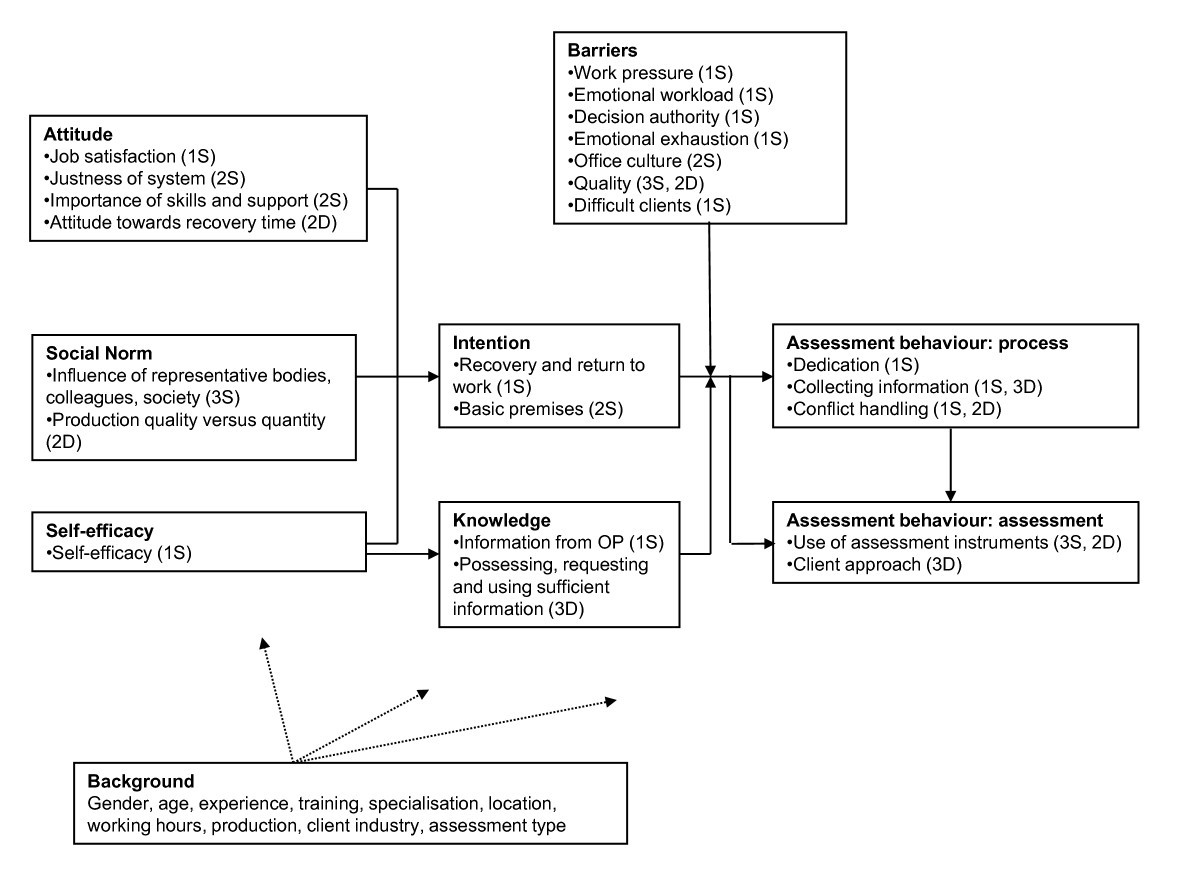
Can selfreported disability assessment behaviour of insurance physicians be explained? Applying
Vragen? Inhoudsopgave E: eigen effectiviteit ASE model; een korte introductie A: attitude S: sociale invloed E: eigen effectiviteit Mate van zelfvertrouwen Inschatting van gedrag Inschatting van benodigde vaardigheden Barrieres Een korte introductie Onvoldoende kennis bij zowel

Uitwerking ASEModel preventie2014faal
Het ASE model. Om echt kritisch te kunnen kijken naar verschillende oorzaken, zijn er gedragsverklaringsmodellen beschikbaar die je kunnen helpen, bijvoorbeeld het Health Believe model, het ASE model of het Gedragswiel. Hieronder zie je een afbeelding van het ASE model waarin verschillende gedragsdeterminanten genoemd worden.

Figure of aspects according to the ASE model to change behaviour or the... Download Scientific
Het model is gebaseerd op de Theory of Planned Behaviour en de Sociale Leertheorie van Albert Bandura. Het model stelt dat menselijk gedrag te voorspellen is door de intentie van gedrag te bestuderen. De intentie wordt beïnvloed door Attitude, Sociale invloed en eigen Effectiviteit ( ASE ). Het ASE model is ontwikkeld door Hein de Vries in 1988.
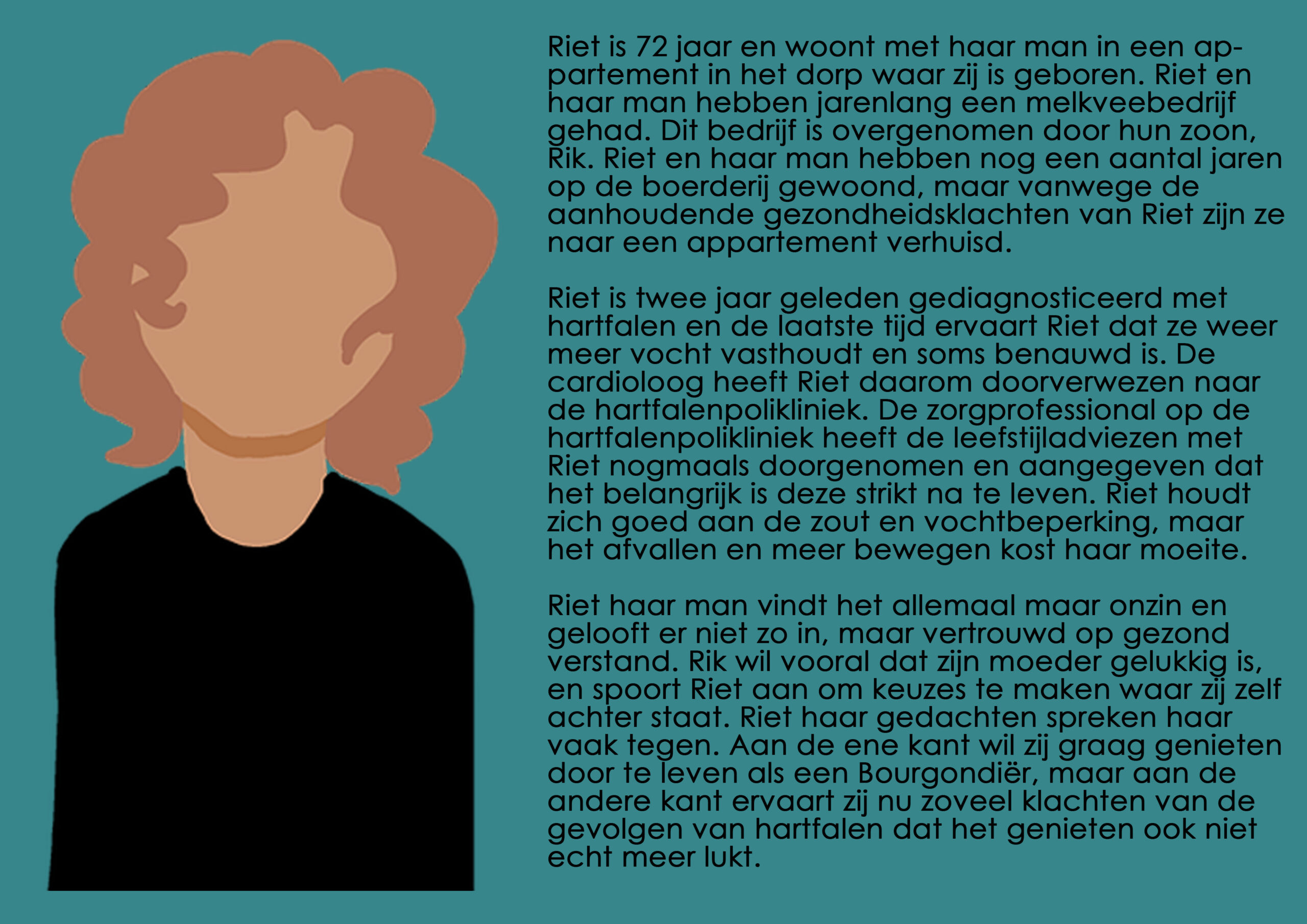
Ondersteuning zelfmanagement Verpleegkundige op Afstand
Results. Bottom Line: The ASE behavioural explanation model (Attitude, Social Influence and Self-Efficacy) was used as theoretical basis for the development work.These instruments were designed to match the needs and the working circumstances of insurance physicians.This study resulted in the development of a training course to teach insurance.
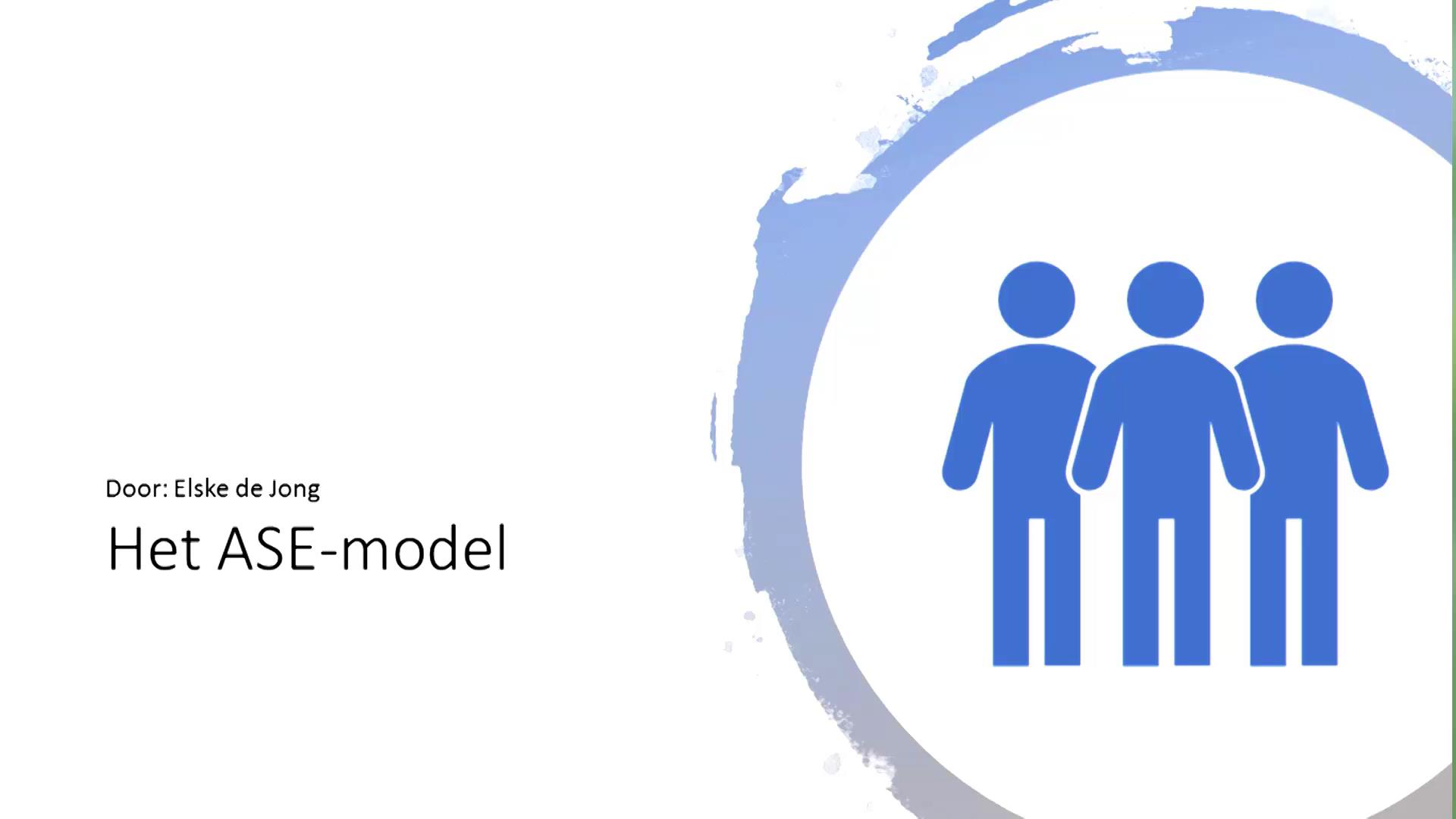
ASEmodel
Background: The ASE model, an integration of social psychological models, states that motivational phases and the transition from one phase to another can be predicted by behavioral determinants. The goal of the present study was to replicate the so-called O pattern that was found in earlier Dutch studies. Methods: In four cross-sectional studies (N = 918, N = 354, N = 225, N = 317), smokers.

The ASE model, as defined by De Vries [24]. Download Scientific Diagram
I-Change Model. In psychology, the I-change model [1] [2] or the integrated model, for explaining motivational and behavioral change, derives from the Attitude - Social Influence - Self-Efficacy Model, integrates ideas of Ajzen's Theory of Planned Behavior, [3] Bandura 's Social Cognitive Theory, Prochaska 's Transtheoretical Model, [4] the.

The representation of the components of the ASE model in the... Download Scientific Diagram
Het ASE-model gaat ervan uit dat ons gedrag een gevolg is van onze intentie, deze kan zowel positief als negatief zijn. Deze positieve of negatieve intentie kan invloed hebben op de beslissing van mensen of iemand zich wel of niet op een bepaalde manier gaat gedragen. Volgens het ASE model kun je het gedrag voorspellen door te kijken naar de.
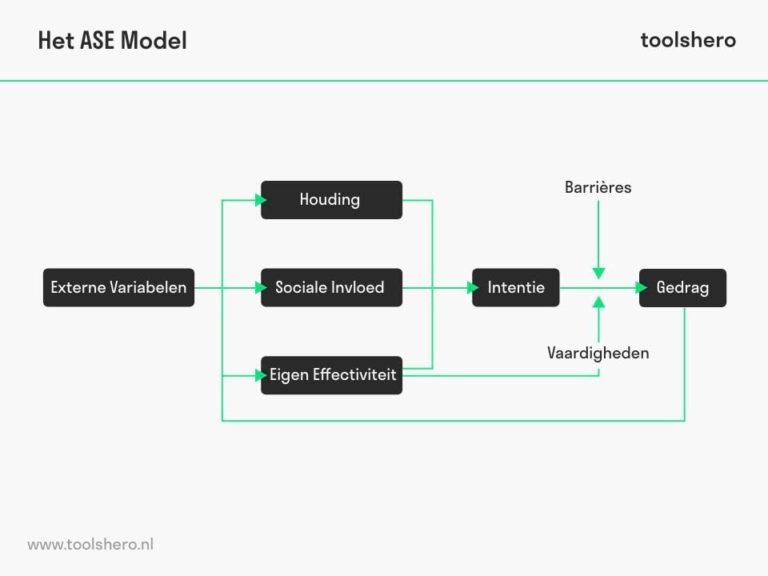
ASE model van Hein de Vries Toolshero
The Integrated Model for explaining motivational and behavioral change, or the I-CHANGE Model, is derived from the Attitude - Social influence - self-Efficacy Model (De Vries et al., 1988; De Vries & Mudde, 1998), that can be considered as an integration of ideas of Ajzen's Theory of Planned Behavior, Bandura's Social Cognitive Theory, Prochaska's Transtheoretical Model, the Health.

Het ASE model bij gedragsverandering en afvallen Optima Vita
Een ander model dat uitgaat van motivatie voor gedragsverandering, is het ASE-model van De Vries. Dit model is gebaseerd op de Theory of Planned Behavior (Ajzen, 1985) en de Social Learning Theory (Bandura, 1986). Dit model stelt dat als je een intentie hebt om bepaald gedrag te vertonen, dit leidt tot het daadwerkelijk uitvoeren van dat gedrag
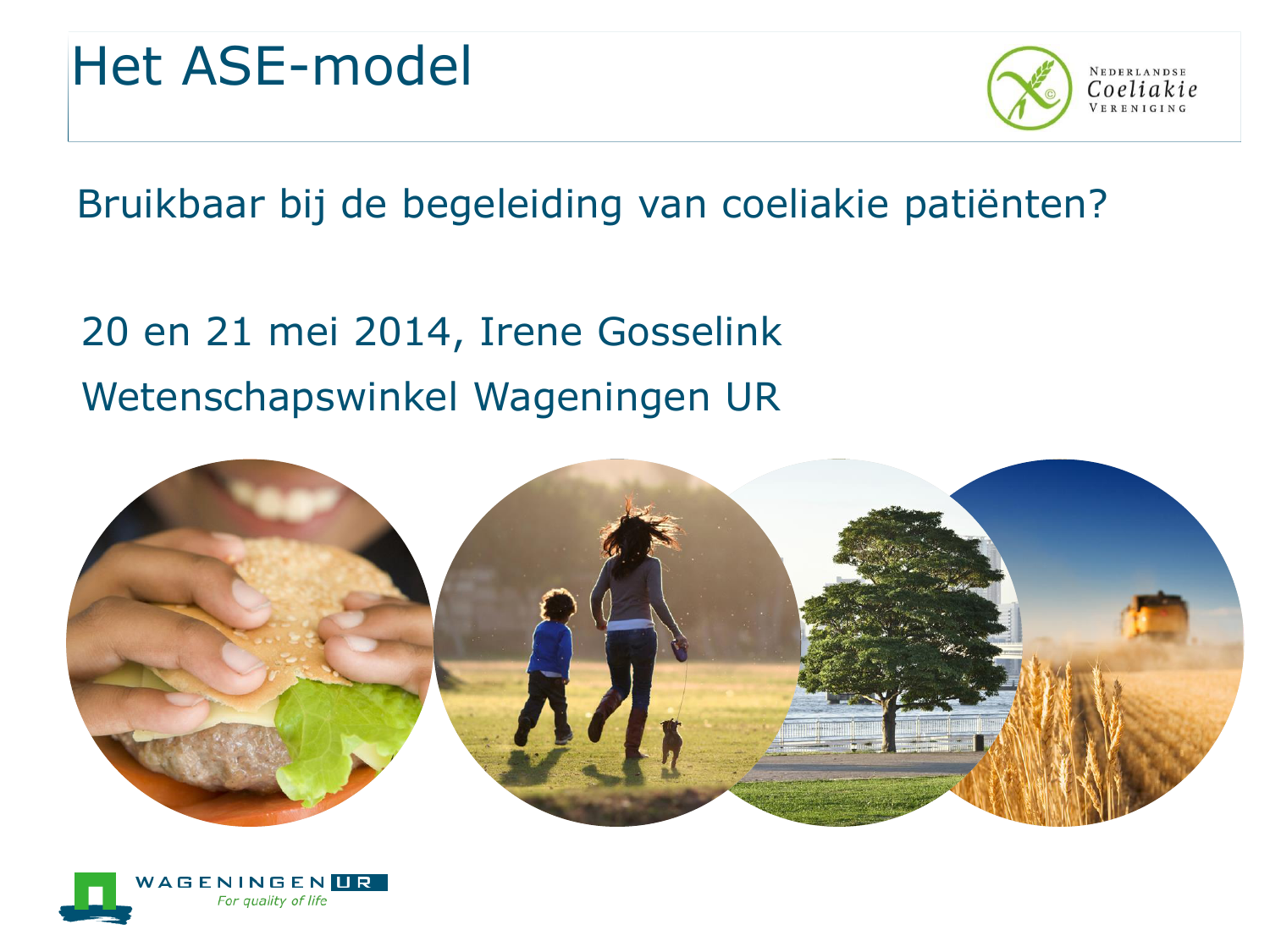
Het ASEmodel
gezondheidsverklaringsmodel, het ASE - model (de Vries, Dijkstra, & Kuhlman, 1988), vormen de psychosociale factoren attitude, sociale invloed en eigen effectiviteit de drie hoofddeterminanten.
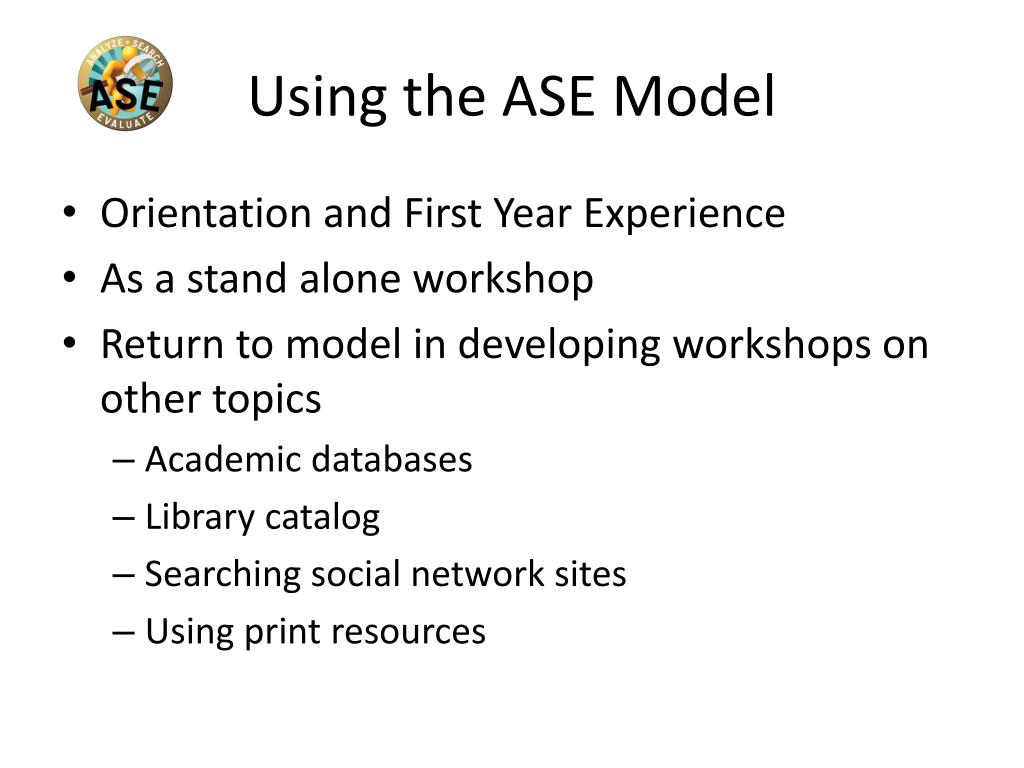
PPT The ASE Process Model An Evidencebased Approach to Information Literacy Instruction
Het ASE-model. 8 juli 2021. Het ASE-model betreft een model waarmee gedrag verklaard en geanalyseerd kan worden. Het model verschaft tevens een antwoord op de vraag hoe gedrag kan worden beïnvloedt. In het ASE-model worden twee categorieën van determinanten voor het verklaren van gedrag onderscheiden, namelijk determinanten met een direct.

ASEmodel Gevoelens, Gedrag, Kleurplaten
Het ASE-model kan uitgebreid worden met kennis en risicoperceptie . In het ASE-model komt de rol van kennis er mager af. Kennis kan als determinant voorafgaan aan de determinanten A, S en E. Overigens moet de rol van kennis weer niet overschat worden. De stappen daarna zijn meer bepalend voor wat mensen uiteindelijk doen (gedrag) dan de factor.
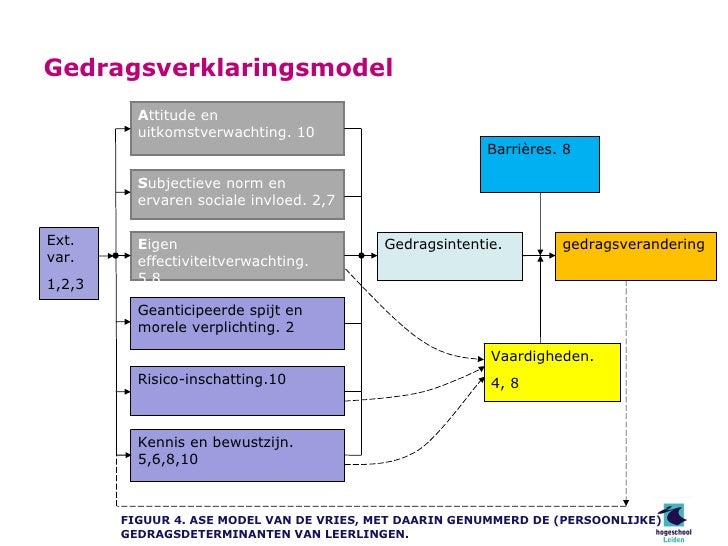
Presentatie Gezondheidsadvies2
The model states that human behavior can be predicted by studying the intention of behavior. Intention is influenced by Attitude, Social Influence and self Effectiveness (ASE). The ASE model was developed by Hein de Vries in 1988. Today it is mainly used in the Netherlands and Belgium to help people change their behavior when it comes to health.

The ASE model, as defined by De Vries [24]. Download Scientific Diagram
The ASE model posits that human behavior can be predicted if one studies the intention behind the behavior. It was created by health communication expert Hein de Vries in 1988. The ASE model believes intention and behavior are determined by cognitive variables such as attitude, social influence, and self-efficacy. The model also believes that intention predicts behavior such that one's.

Uitwerking ASEmodel yourhealthroken
Het ASE-model (De Vries, 1988) is gebaseerd op de Theory of Planned Behavior (Ajzen, 1985) en de Social Learning Theory (Bandura, 1986). Dit model gaat ervan uit dat de intentie om bepaald gedrag te vertonen, leidt tot het daadwerkelijk uitvoeren van dat gedrag. Afbeelding: ASE-model (Sassen, 2004)